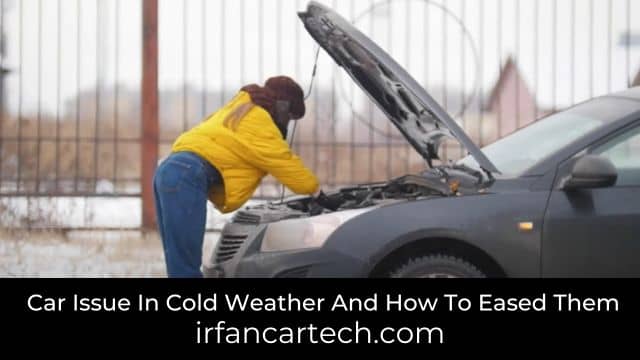Car Issue In Cold Weather And How To Eased Them: Car issues in cold weather are not uncommon and can be caused by various factor. Cold temperature can affect several components of a vehicle, leading to difficulties in starting the engine, reduced performance and potential mechanical problem. Here are some common car issues in cold weather and how to mitigate these issues.
Car Issue In Cold Weather
1.Battery Problem
Cold weather can reduce the cranking power of the battery making it harder for the engine to start. If battery is old or weak it may struggle to provide enough power to start the car in cold condition.
2.Thickened Fluids
Engine oil, transmission fluid, and other lubricants can thicken in cold temperature reducing their effectiveness in protecting and lubricating the engine and transmission.
3.Frozen Fuel Line
If there is condensation or water in the fuel lines, it can freeze in cold weather blocking the flow of fuel to the engine.
4.Tire Pressure Changes
Cold weather can cause the air in your tires to contract leading to lower tire pressure. This can affect the operation and fuel efficiency of the vehicle.
5.Frozen Door Locks
Door locks and handles may freeze, making it difficult to unlock and open the car.
6.Wiper And Washer Fluid Issues
Windshield wipers can get stuck or freeze to the windshield and washer fluid may freeze, making it challenging to maintain visibility.
7.Engine Performance
In extremely cold weather, the engine may take longer to reach its optimal operating temperature, which can affect fuel efficiency and performance.
Consider Following Tips To Eased Car Issue In Cold Weather
1.Keep the car in a garage or covered area to protect it from extreme cold.
2.Check your battery to ensure it is in good condition and replace it if it’s old or weak.
3.Use the right viscosity of engine oil suited for cold weather condition.
4.Keep your gas tank at least half full to reduce the risk of condensation forming in the fuel tank and fuel lines.
5.Check and maintain proper tire pressure regularly.
6.Apply silicone lubricant to door seals and lock to prevent freezing.
7.Warm up the car for few minutes before driving but avoid prolonged idling.
8.Use a windshield cover or defroster to prevent ice and snow build-up.
Notice
It’s best to have your vehicle inspected by qualified mechanic on regular basis to identify and address any underlying problem.
